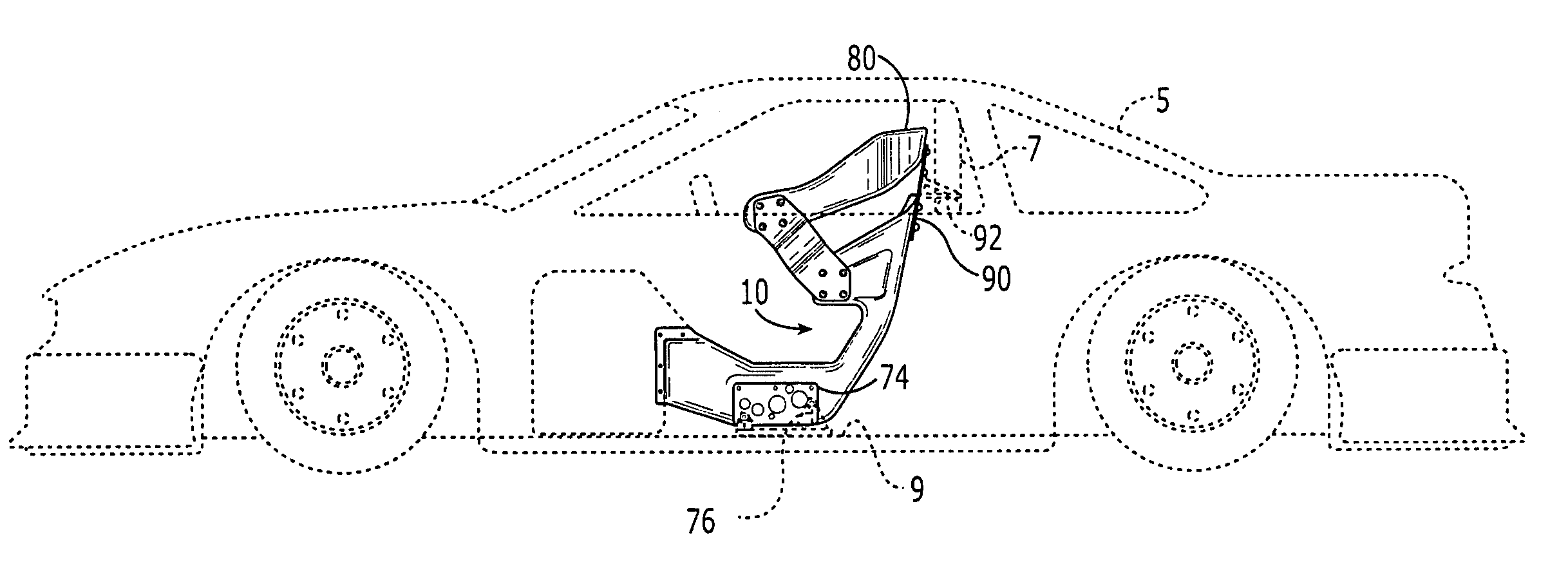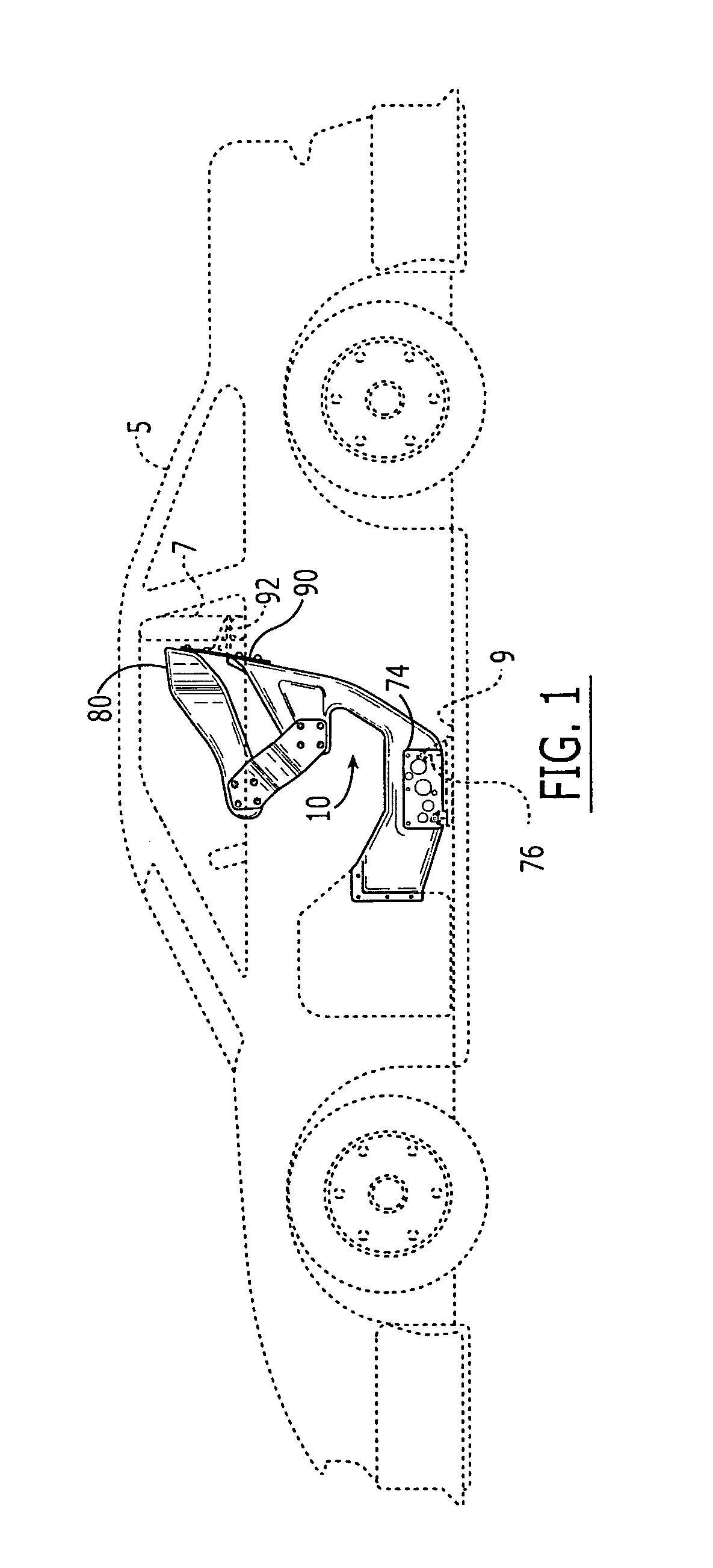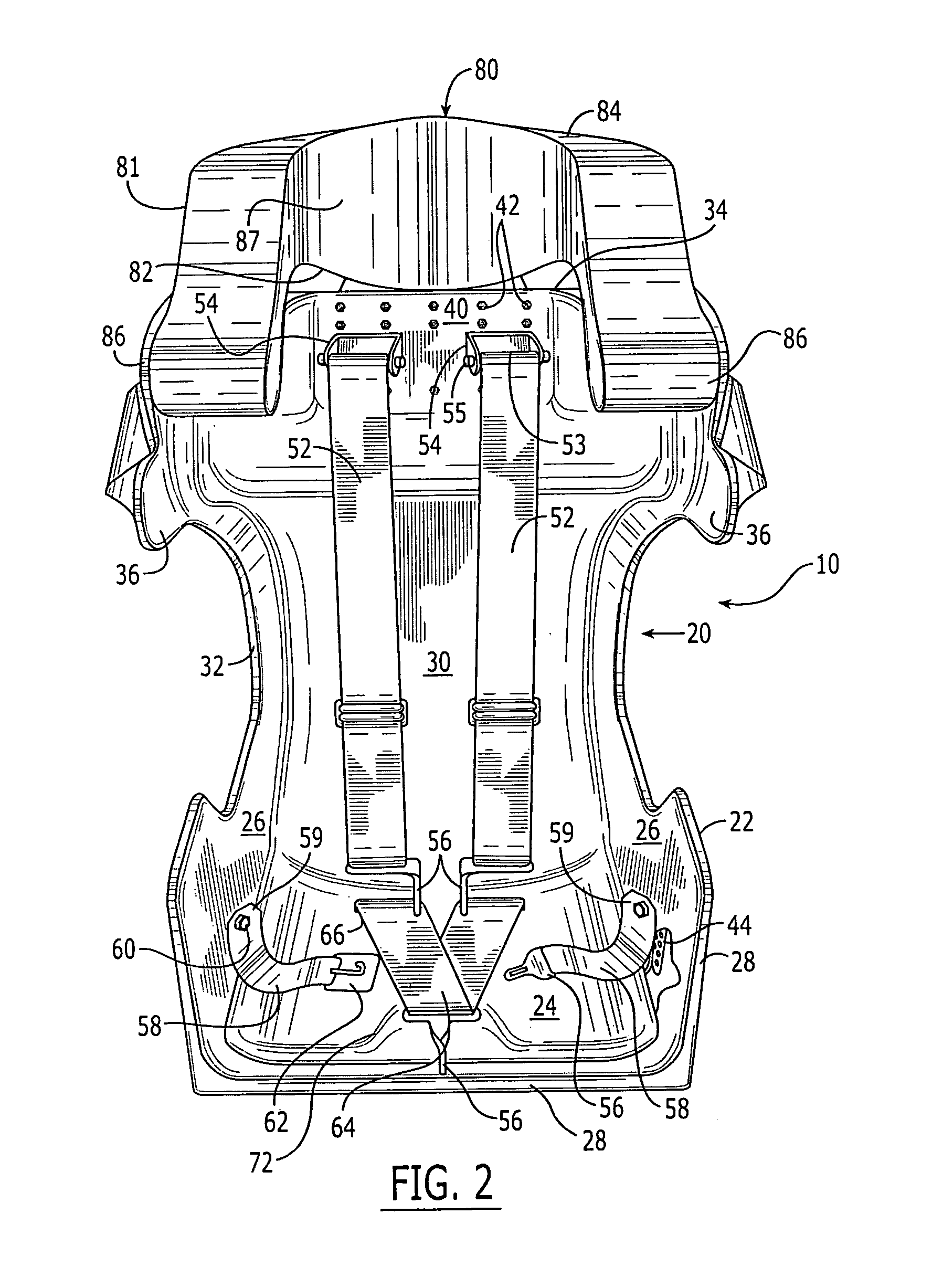Molded safety seat
a safety seat and molded technology, applied in the direction of movable seats, roofs, pedestrian/occupant safety arrangements, etc., can solve the problems of reducing the potential for straps to be pinched, abraded, damaged, etc., and reducing the time required, ensuring safety, and ensuring safety. the effect of comfor
- Summary
- Abstract
- Description
- Claims
- Application Information
AI Technical Summary
Benefits of technology
Problems solved by technology
Method used
Image
Examples
Embodiment Construction
[0023]Referring to FIG. 1, a safety seat 10 is positioned within a vehicle 5 and attached to certain structural members of the vehicle 5, e.g., a roll cage 7 and floor frame 9, by mounting brackets 76, 92 fastened to support plates 74, 90 that are attached to the safety seat 10. In a preferred embodiment, headrest 80 is attached to the safety seat 10.
[0024]As shown in FIG. 2, the safety seat 10 includes a unitary molded shell 20, a safety restraint system integral to the shell 20 and padding 70 disposed on a seating surface 110 of the shell 20 (as illustrated in FIG. 5). The shell 20 has a bottom portion 22 that seamlessly merges into a back portion 30 such that the shell 20 has a “bucket-seat” type shape. The bottom portion 22 is U-shaped with a base 24 and opposing sides 26 extending generally perpendicularly from the base 24, the base being generally horizontal. The base 24 and sides 26 have a front edge 28 opposite the back portion 30 of the shell 20. The back portion 30 extends...
PUM
| Property | Measurement | Unit |
|---|---|---|
| thick | aaaaa | aaaaa |
| pressure | aaaaa | aaaaa |
| forces | aaaaa | aaaaa |
Abstract
Description
Claims
Application Information
 Login to View More
Login to View More - R&D
- Intellectual Property
- Life Sciences
- Materials
- Tech Scout
- Unparalleled Data Quality
- Higher Quality Content
- 60% Fewer Hallucinations
Browse by: Latest US Patents, China's latest patents, Technical Efficacy Thesaurus, Application Domain, Technology Topic, Popular Technical Reports.
© 2025 PatSnap. All rights reserved.Legal|Privacy policy|Modern Slavery Act Transparency Statement|Sitemap|About US| Contact US: help@patsnap.com



